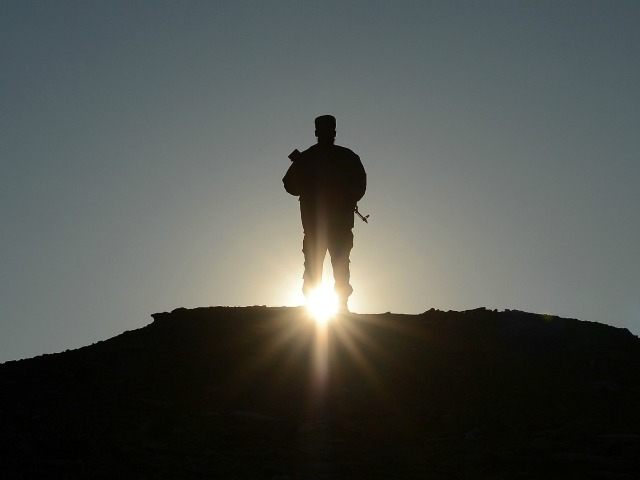The U.S.-led international coalition in Afghanistan continues to be drawn “into direct combat situations” despite having transitioned from a combat mission to a train, assist, and advise (TAA) role at the beginning of 2015, according to a United Nations report.
Nevertheless, U.S. Gen. John Campbell, the outgoing top commander of American and international forces in Afghanistan, told lawmakers earlier this month that U.S. military does “not have the authority” to attack the Taliban, the most prominent terrorist group in the country, unless they strike first.
Gen. Campbell indicated that the change in the Taliban rules of engagement were part of the transition from combat to the TAA mission ordered by President Obama, who had vowed to end the Afghanistan war.
On December 31, 2014, President Obama and NATO declared the end to the combat mission being carried out by the International Security Assistance Force (ISAF), marking the beginning of the U.S.-led coalition’s transition to a TAA role the following day, which is also when Afghan security forces assumed full responsibility of their own country’s security.
By the time President Obama and NATO had proclaimed that international troops had ceased their combat mission, the U.S. military footprint had been reduced dramatically, from a peak of about 100,000 to about 9,800, which is the number that still remains in the Afghanistan.
“Despite the formal end of the NATO/ISAF mission, international military forces continued to provide direct military support for their Afghan counterparts: as fighting intensified, international forces continued to be drawn into direct combat situations,” notes the UN Assistance Mission in Afghanistan (UNAMA) in its latest 2015 Annual Report on Protection of Civilians in Armed Conflict.
The UNAMA comments echoed the most recent quarterly report to Congress from the Special Inspector General for Afghanistan Reconstruction (SIGAR), a watchdog agency, which also noted that U.S.-led troops, faced with a resilient Taliban, have been drawn into combat after Obama claimed the combat mission had ended.
“A year after the Coalition handed responsibility for Afghan security to the Afghan National Defense and Security Forces (ANDSF), American and British forces were compelled on several occasions to support ANDSF troops in combat against the Taliban,” declares SIGAR.
“There were several reports of U.S. Special Forces fighting alongside Afghan security forces,” later adds SIGAR. “While the United States has two non-combat missions—training Afghan forces and supporting counterterrorism operations against the remnants of al-Qaeda—U.S. forces are also being drawn into fighting the Taliban.”
Both the SIGAR and UNAMA reports acknowledged the growing presence of the Islamic State (ISIS/ISIL) branch in Afghanistan known as the Khorasan Province (ISIL-K), which has established a stronghold in the eastern province of Nangarhar, located along the border in Pakistan.
Last Thursday, Brig. Gen. Wilson Shoffner, a U.S. military spokesman, told Pentagon reporters that the American troops have “significantly” increased its air strikes against ISIL-K in Afghanistan since the president granted commanders broader authority last month to target the jihadist group there.
In early January, Pentagon press secretary Peter Cook was hesitant to say that the U.S. military had been engaged in combat operations after one soldier was killed and two others wounded while defending themselves in the longtime Taliban stronghold of Helmand province in southern Afghanistan. Eventually, Cook acknowledged that the American soldiers’ predicament at the time constituted a “combat situation,” stressing that the U.S. military’s mission was only to train, assist, and advice (TAA) their Afghan counterparts, not intentionally engage battles.
Since President Obama ended the combat mission in Afghanistan and prevented the U.S. military from offensively attacking the Taliban, the Afghan civilians and security forces have suffered record casualties, primarily at the hands of the Taliban.

COMMENTS
Please let us know if you're having issues with commenting.